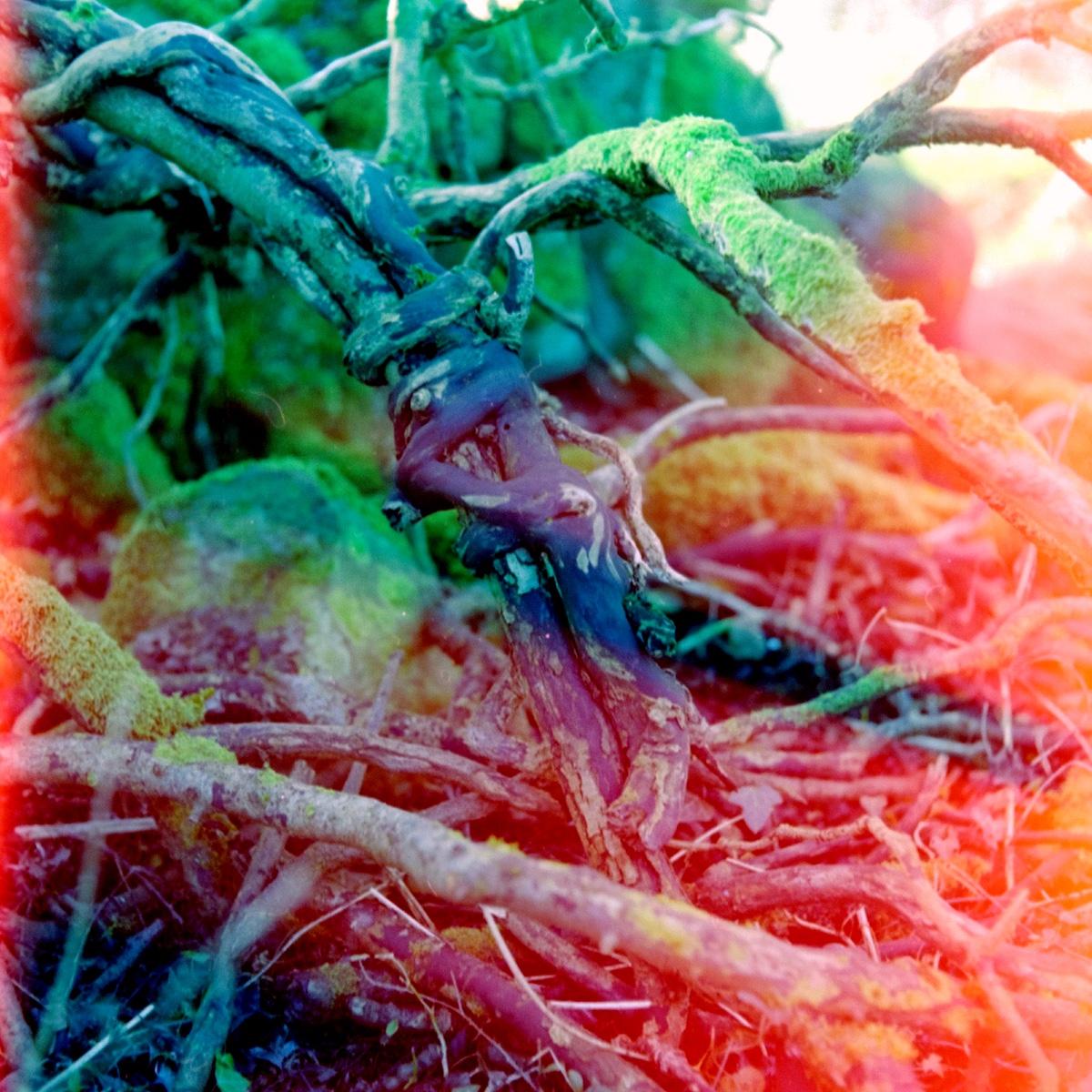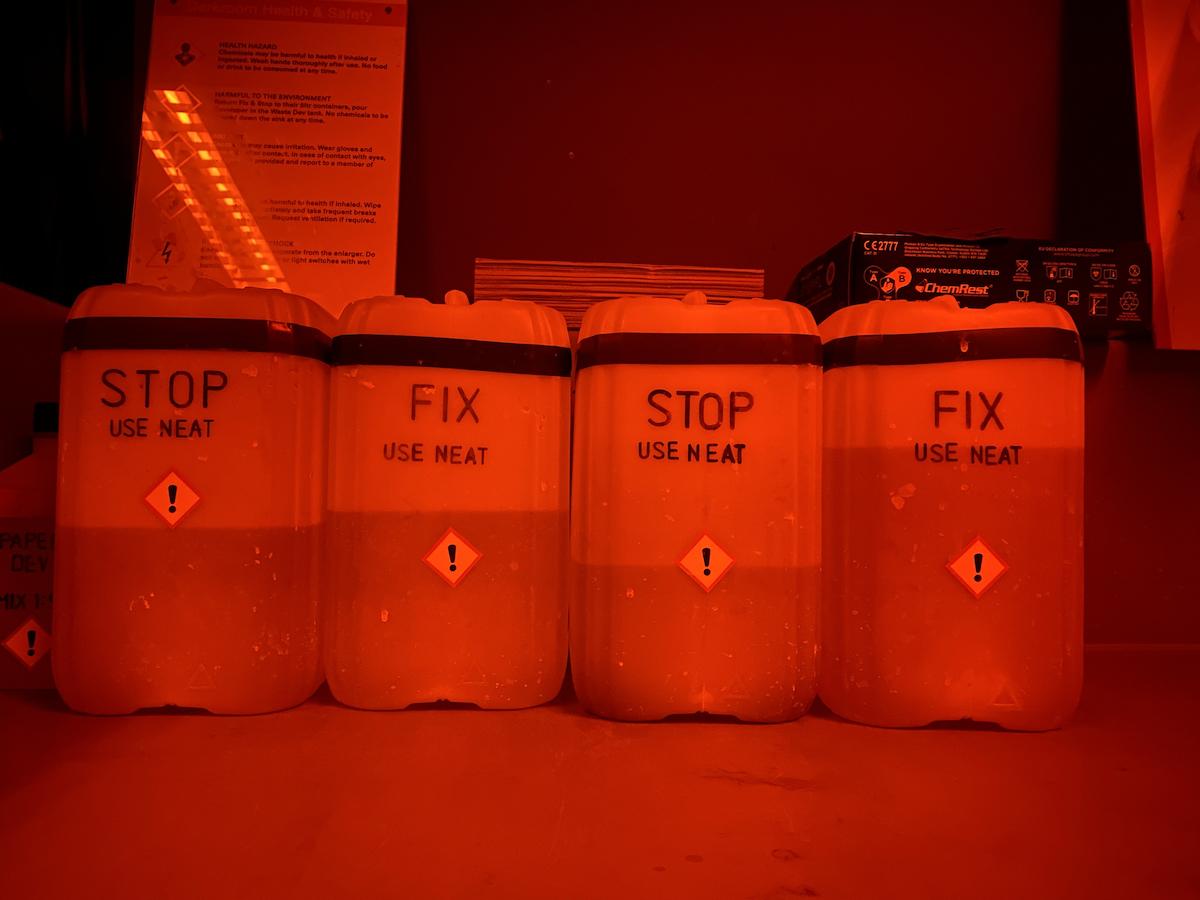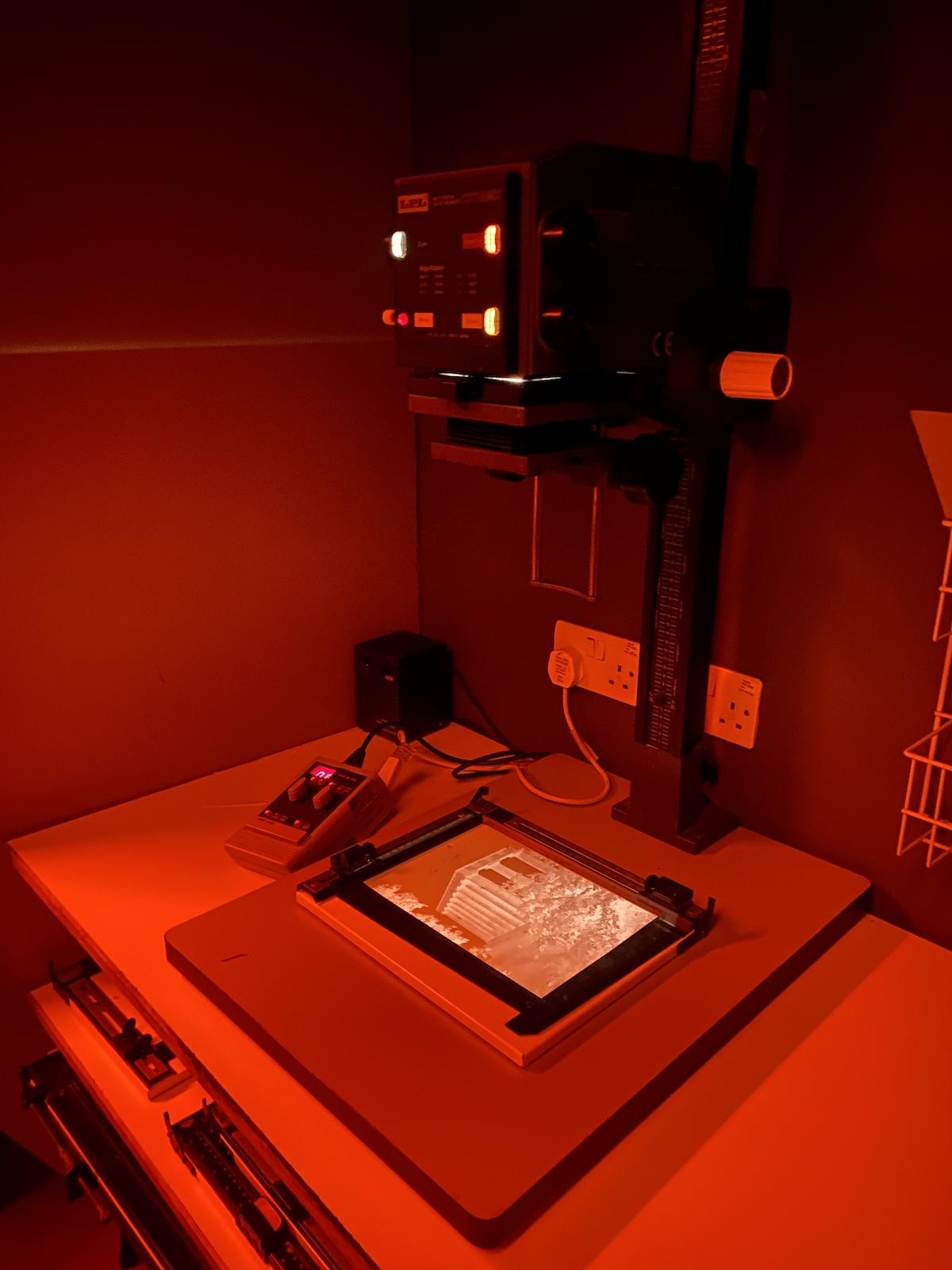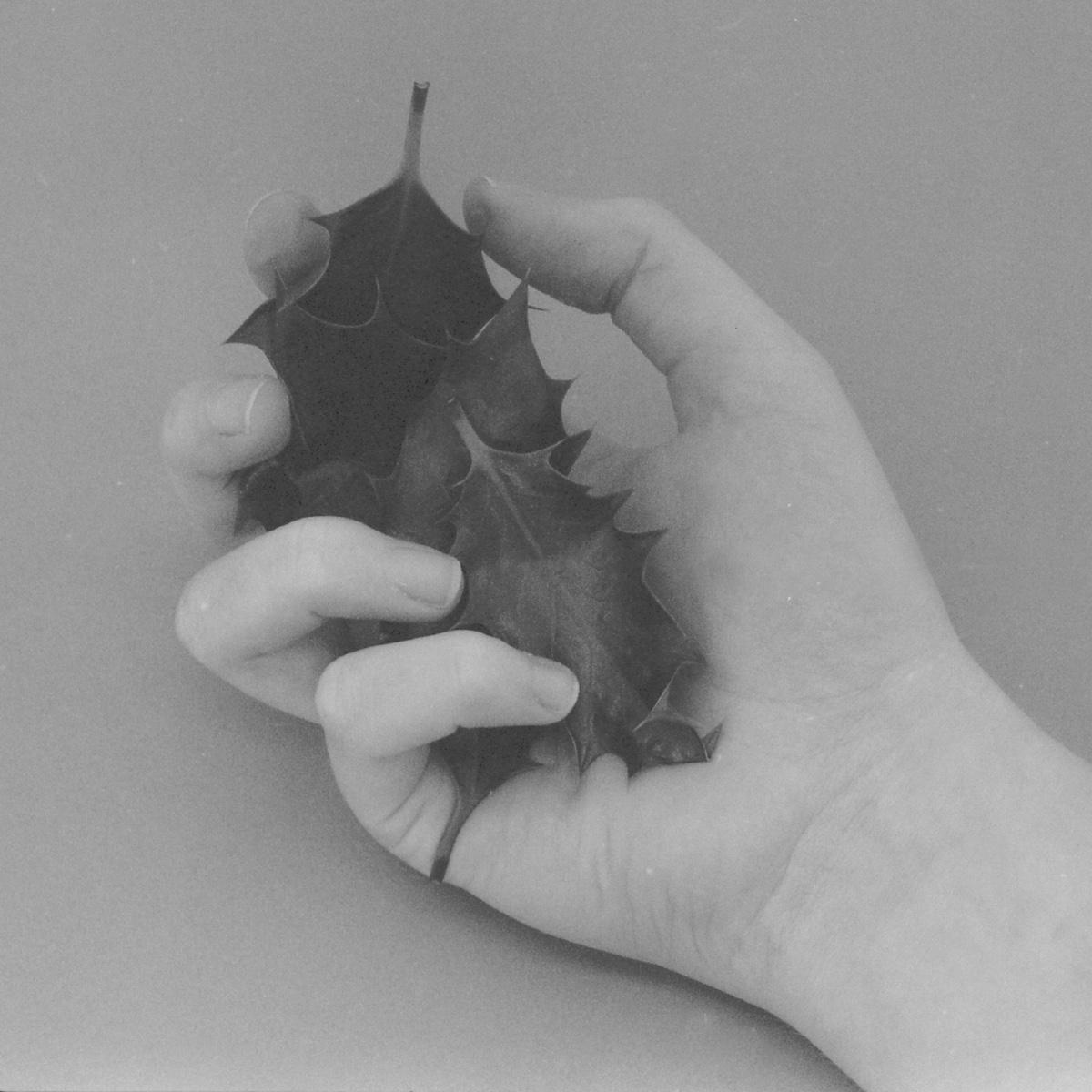For a functioning darkroom, a few elements are necessary: a safelight (a light source, usually red, that doesn’t interfere with light-sensitive materials), an enlarger (the machine that projects an image onto the paper), the chemistry (the solutions to develop, stop, and fix an image on paper), photographic paper, and running water. In a color darkroom, there is no light source—photographic paper is sensitive to all the colors of the light spectrum—so the developing and printing processes are done in total darkness. Once a film roll has been developed in a film canister, washed, and dried, photographs are ready to be printed.
In order to print a photograph, the film roll is placed in the negative carrier inside the enlarger. The light from the enlarger projects the chosen image onto photo-sensitive photographic paper. A timer controls the duration of this exposure. After the paper has been exposed to light, it is submerged in three solutions. The first is the developer which reveals, in a 90-second span, the image on the paper. The paper is then bathed in a stop solution that, as the name suggests, stops the developing process. Lastly, the now-developed photograph is immersed in the fix, which secures the image onto the paper. After these three steps, the photographs are washed in running water and then hung to dry.
































